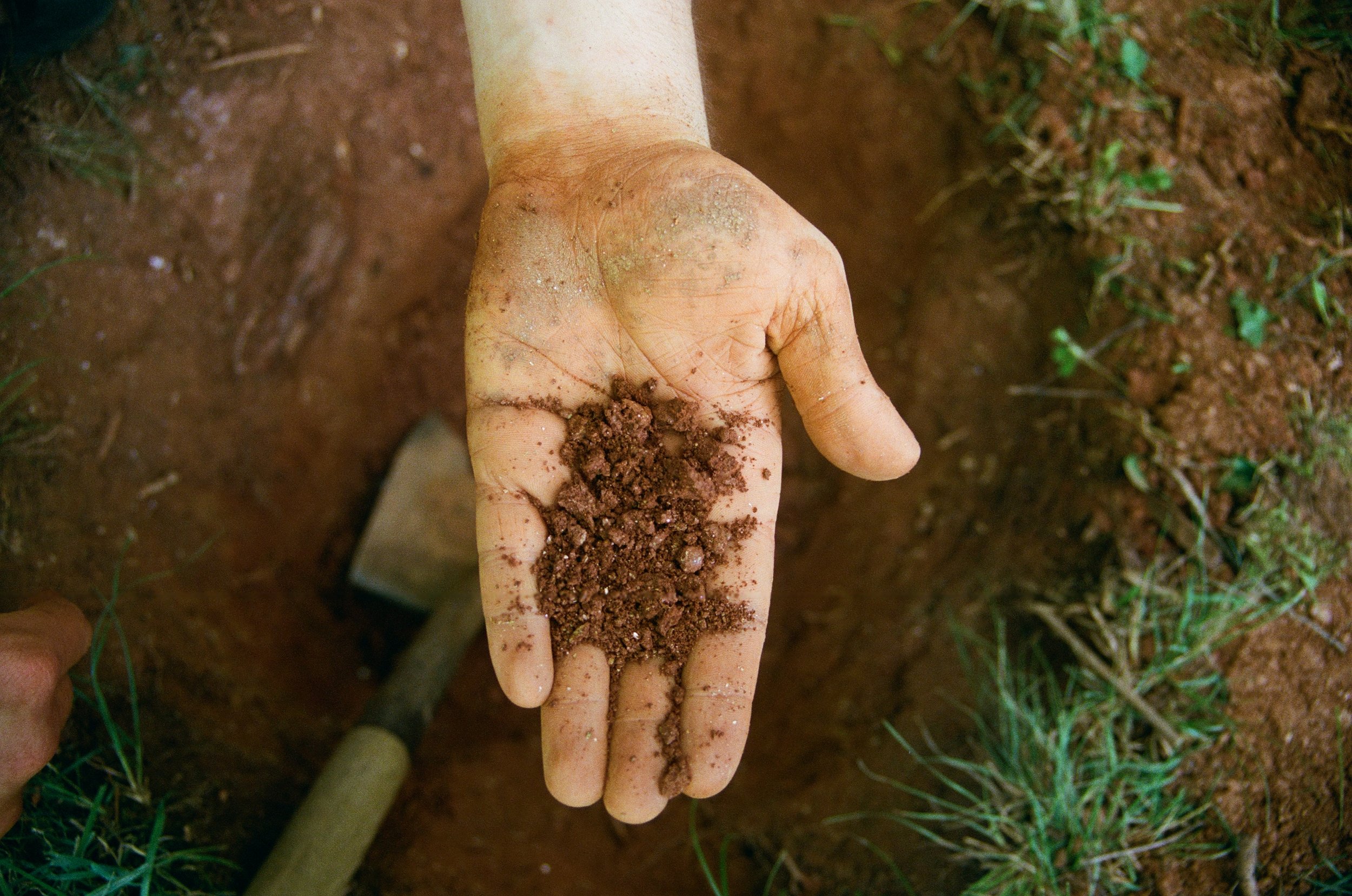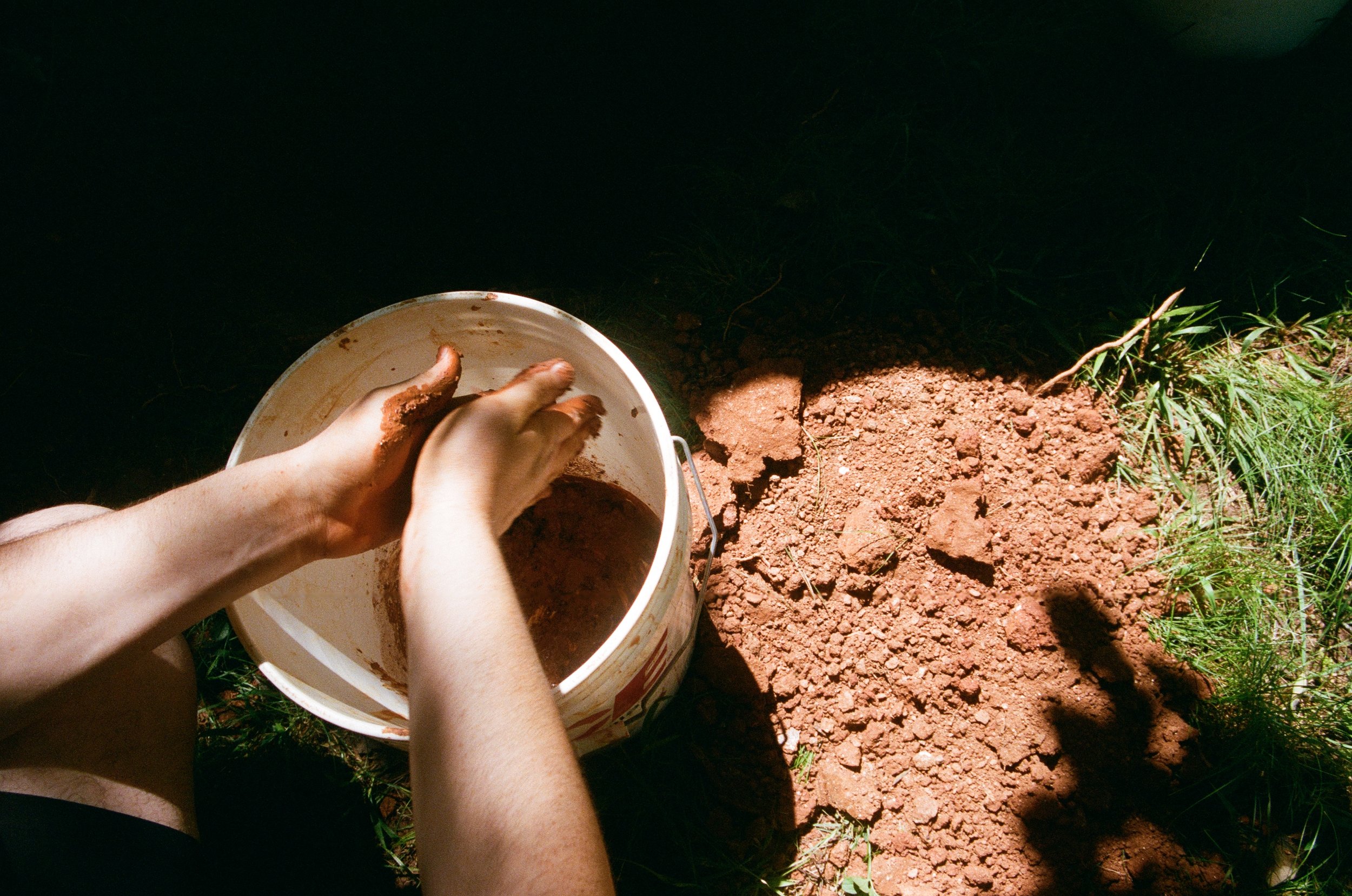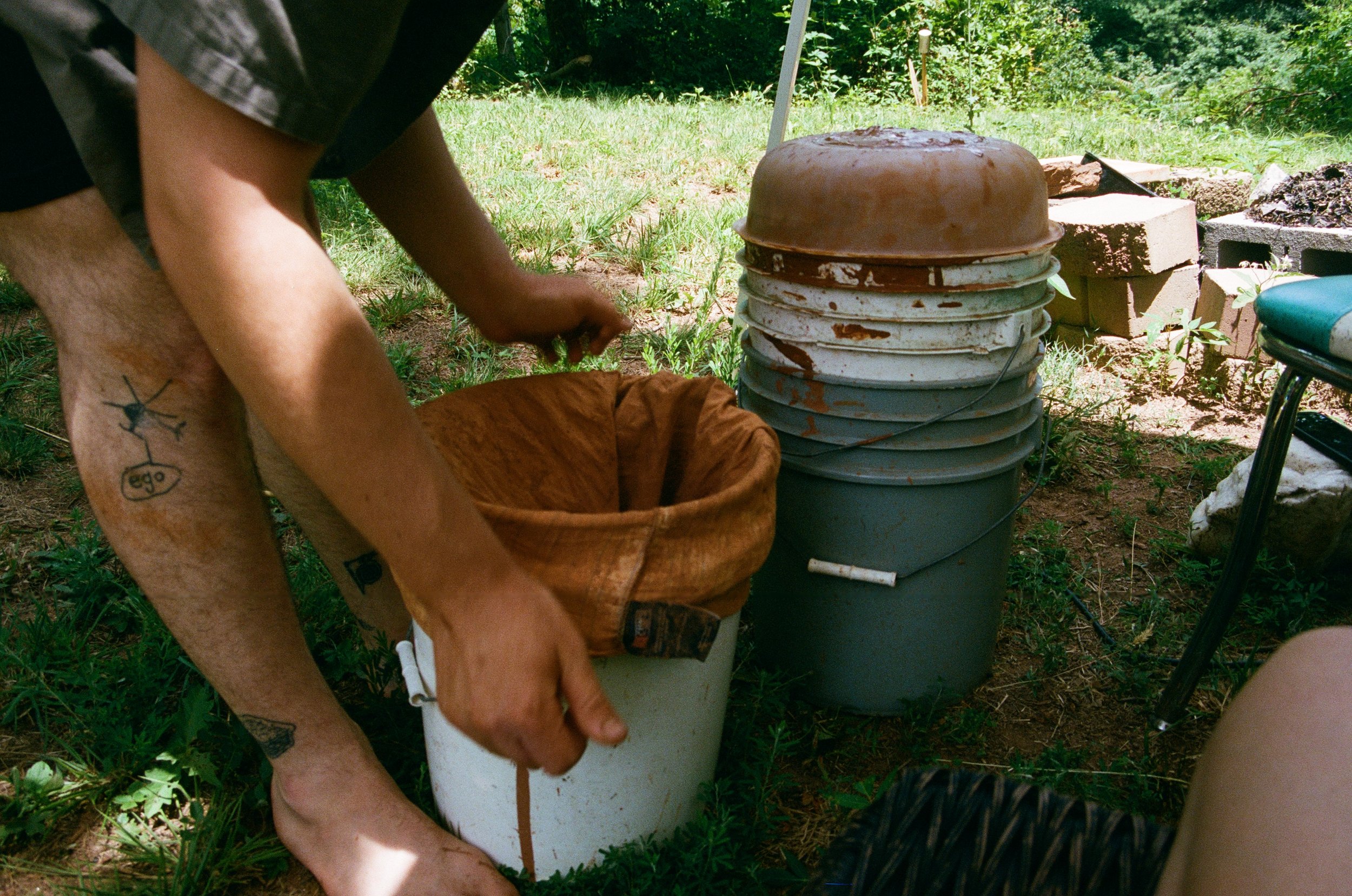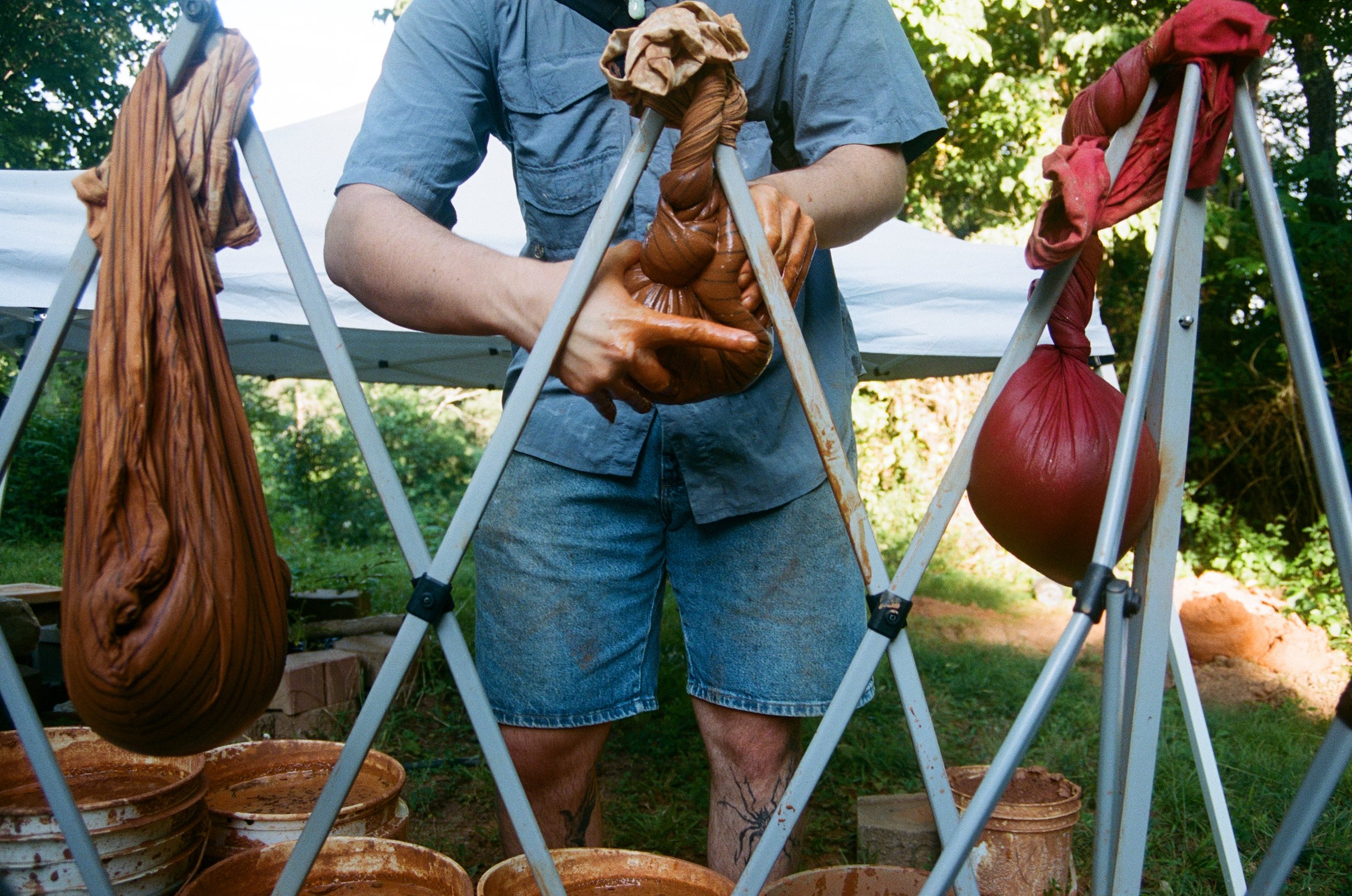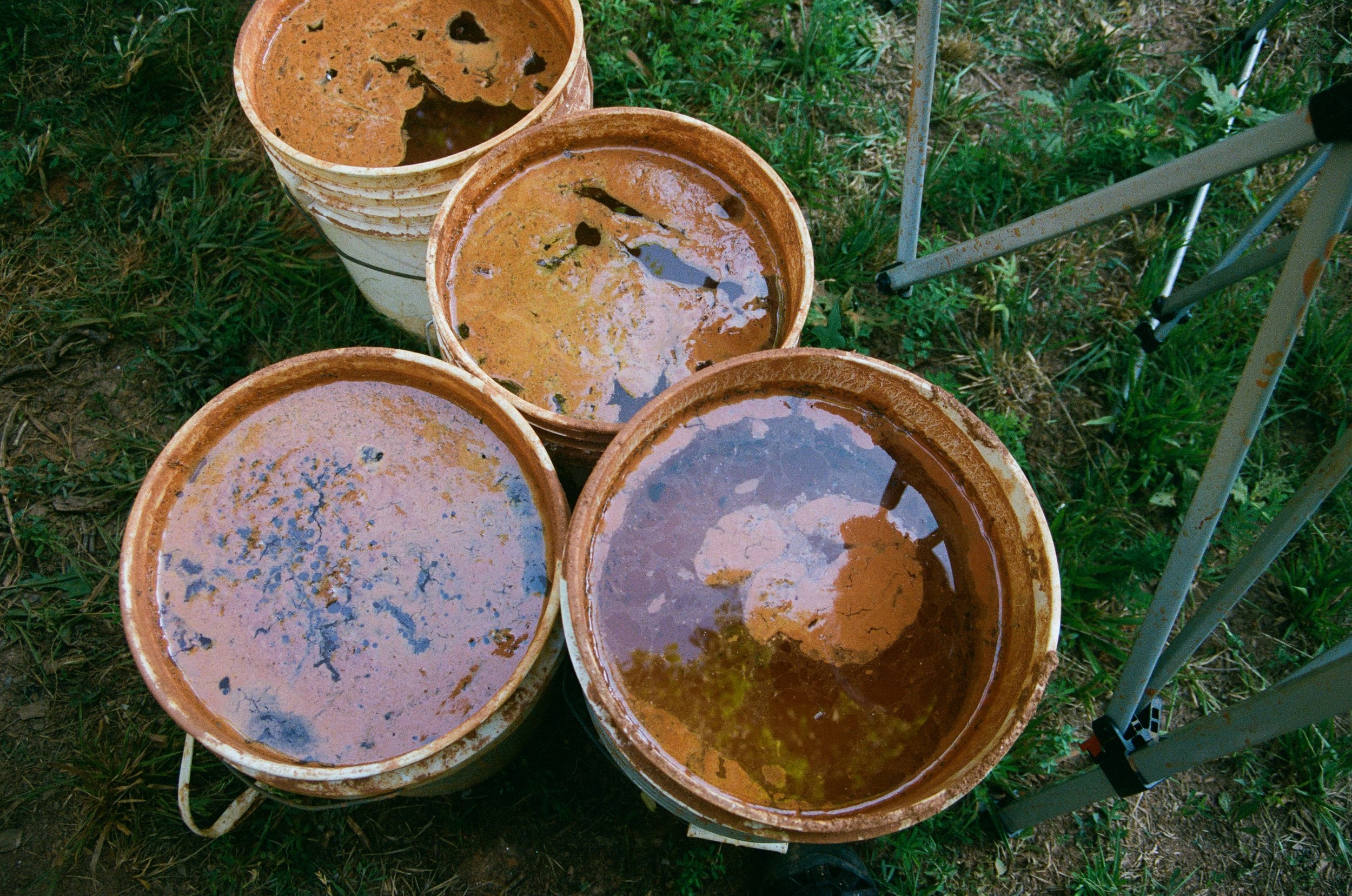
In the summer of 2023, I spent two months as a visiting artist at Odyssey ClayWorks in Asheville, North Carolina. My mission during this time was to rely solely on foraged materials, avoiding any purchases.
After several scouting trips and researching local geological maps, I gathered various samples for potential glazes and clay bodies. I searched beneath bridges, along riverbanks, and anywhere I could find small samples.
To my surprise, the best clay body I discovered was right in my friend's backyard, where I was staying. It turned out to be a mica-rich red clay body. I processed the clay through multiple sieve mesh sizes (16, 60, 80) and experimented with adding river sand. I conducted bar tests to measure shrinkage rate, cone tests to assess slumping, and ribbon tests to gauge plasticity.
Ultimately, the most functional version of the clay involved sieving it to 80-mesh and not adding anything else. While it was suitable for throwing, it had short clay platelets, requiring substantial compression throughout the entire throwing process. When fired in oxidation at Cone 7, it produced a dark red appearance with white mica speckles and had an absorption rate of 5.29%. In a gas reduction firing at Cone 10, it resulted in a smooth matte black finish with a 2% absorption rate. Finally, in a wood-fire reduction cooling at Cone 12, it achieved a rich, satin black appearance.

